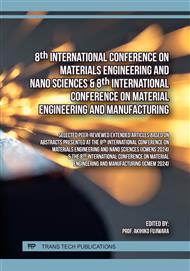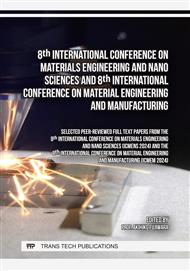p.19
p.25
p.31
p.37
p.45
p.53
p.59
p.65
p.71
Experimental Evaluation of Rheological Properties of Water-Based Drilling Fluid with Fly Ash Additive
Abstract:
Drilling fluid rheology is very important aspect for judging its suitability for the well-drilling operation. This study looked at how fly ash affected the rheological characteristics of drilling fluids that were based on water. Six different drilling fluid samples (combination of water-bentonite-fly ash) have been prepared: 4 samples without engine oil additives and 2 samples with engine oil additive. The shear stress between fluid layers vs. shear rate curves and the viscosity of fluid vs. shear rate curves have been plotted for the controlled shear rate application by rotational rheometer MCR 102 (Make: Anton-Paar Inc.). Curve fitting have been done successfully with the Herschel-Bulkley rheology model and various parameters have been obtained. It is found that addition of fly ash as well as additive oil imparts favorable rheology to water based drilling fluids.
Info:
Periodical:
Pages:
45-50
Citation:
Online since:
September 2024
Authors:
Price:
Сopyright:
© 2024 Trans Tech Publications Ltd. All Rights Reserved
Share:
Citation:



